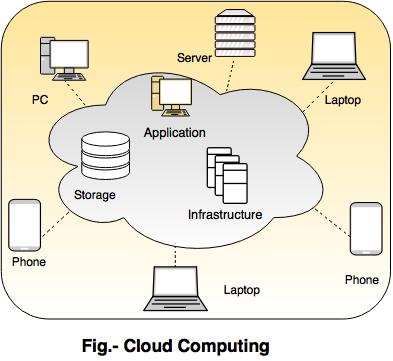Cloud Computing Tutorial
Considered to be scalable, reliable and agile, cloud computing has changed the ways of networking.
Cloud Computing Tutorial
Learn Cloud Computing with this most complete Cloud Computing tutorial in a quick and easy way. Useful for beginners, this tutorial cover all the basic and advance concepts you would need to ace Cloud computing. The diagrams and practical examples help you immediately understand Cloud computing in an interesting way. Who is this Cloud Computing Tutorial designed for?
This tutorial will be very useful for all beginners and professionals wanting to grow their skills in Cloud Computing. Freshers, BCA, BE, BTech, MCA, college students will also find it useful to develop notes, for exam preparation, lab exercises, assignments and viva questions. What do I need to know to begin with?
This tutorial on Cloud Computing expects you to have a basic understanding of networking, internet, database and computer fundamentals. Cloud Computing syllabus covered in this tutorial
This tutorial covers:
Cloud Computing Types, Service Models, Planning, Technologies, Architecture,
Infrastructure, Management, Data Storage, Security, Operations, Applications, Challenges etc.
This is almost everything you would require to learn about Cloud Computing at this level. So, let's begin!
Introduction
- On demand delivery of IT resources through the Internet with payment depending on the use of the service is known as cloud computing.
- The term cloud refers to a network or the Internet.
- It gives a solution for infrastructure at low cost.

- It accesses the multiple server-based computer resources through a network.
- Cloud user accesses the server resources using the computer, smart phones, notebook, tablets or other devices.
- Cloud server maintains all the processing and storage.
Features of Cloud Computing
High scalability - It means on demand provisioning of resources on a large scale without requiring human interaction with each service provider.
High availability and reliability - Availability of servers is more reliable and high because it minimizes the chances of infrastructure failure.
Agility - It shares the resources between users and works very quickly.
Multi-sharing - Multiple user and applications work more efficiently with less cost by sharing common infrastructure using cloud computing.
Maintenance - Maintenance of cloud computing applications is easier as they are not required to be install on each computer and can also be accessed from various places, ultimately reducing the cost.
Low cost - It is cost effective because the company no more needs to set its own infrastructure. It pays according to resources it has consumed.
Services in pay-per-use mode - APIs(Application Programming Interfaces) are provided to the users for accessing the services on the cloud and pay according to use of the service.
Advantages of Cloud Computing
Some of the advantages of cloud computing are as follows:
- It does not require a high powered computer to run cloud because applications run on cloud not on desktop PC or laptop.
- The requirement for large number of powerful servers and IT staff to handle them goes down.
- Hardware and software maintenance cost is reduced using the cloud.
- Fast processing of applications as cloud server's capacity of execution is very high.
- A huge amount of storage capacity is provided by cloud.
Disadvantages of Cloud Computing
Following are the important disadvantages of Cloud Computing:
- Without an Internet connection cloud computing is impossible because, to access any application or document a constant internet connection is a must.
- It also requires high speed internet connection because web based apps need a lot of bandwidth to download (large document).
- Security of data on the cloud can be questionable.
